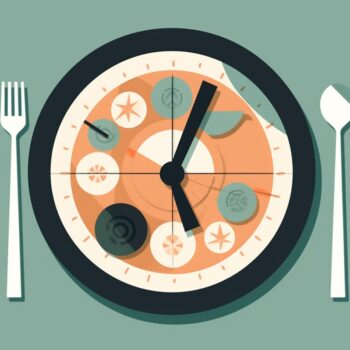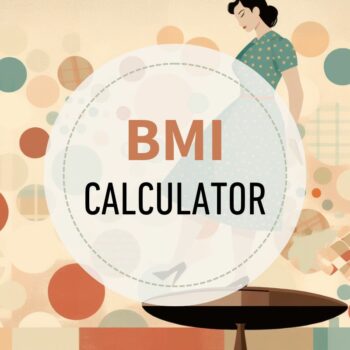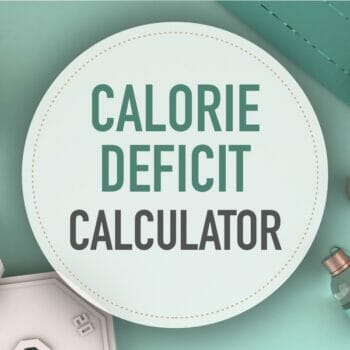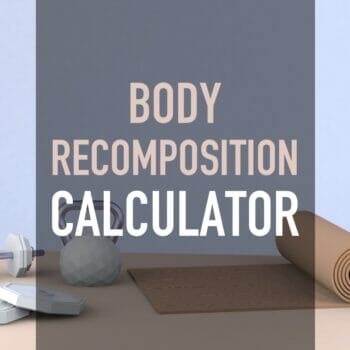Macro Calculator
This free, easy-to-use macro calculator gives you your optimal macronutrients and calories. It’s a weight loss or muscle gain calculator for both women and men.
Combine with macro counting or flexible dieting to reach your goals faster.
How to get leaner and stronger?
Our comprehensive macro-based fat loss program shows you how. Learn more
How do macros work?
The foods we eat are made up of three macros (macronutrients). These are carbohydrates (carbs), protein, and fat.
Chicken is high in protein but has no carbs; rice is high in carbs but has very little fat or protein. The three macronutrients provide the body with energy and raw materials for growth and repair.
By calculating the appropriate daily calorie amount for you, we can then break this down into the best macronutrient ratios to achieve weight loss.
Basic steps for macro counting
- Enter details into the calculator
Make sure to choose the correct goal. - Take note of your calories and macros
These will be the targets you are aiming for each day. - Track your macros
Use an app or pre-plan your meals. - Measure results
Don’t use basic weight scales.
Use proper body composition scales (we recommend Renpho) to measure fat and muscle mass changes.
What is a good macro ratio for fat loss or muscle gain?
Your macros should be based on your Total Daily Energy Expenditure (TDEE) and goals.
The calculator defaults to the best macro ratio proven to work for most people.
This ratio is:
- 30% fat
- Protein is 0.65 grams per pound of body weight,
- The remainder is carbs.
Depending on your goal, this will be either a calorie deficit or a surplus.
You can go further and make more adjustments: Perhaps you’re an extreme endomorph and do better with fewer carbs. Or perhaps you have one kidney and need to eat less protein.
You can fine-tune your results with a bit of math. See how to change your macros here.
What is a good protein ratio?
Rather than a percentage, proteins are based on your body weight. Our calculator has three settings:
- Moderate adjusts the ratio to 0.65 grams per pound of body weight.
This is appropriate for sedentary individuals or people with higher body fat percentages. - High is for active people with moderate strength training and an average body fat percentage.
- Maximum will set the ratio to 1 gram per pound.
This amount is good for bodybuilding and gaining muscle mass. You must be doing intense training.
Find out how to fine-tune your protein ratios when counting macros
Fat macro ratio
Set fat at 30% of daily energy expenditure.
Most people do very well with this amount of fat. See more about choosing the best macro fats. Because of high-fat diets like keto, many people are now eating more fat than they need to.
Carbohydrate macro ratio
Once you’ve calculated protein and fat, the remainder of your daily calories should be from carbohydrates.
Carbs fuel your body and workouts – and are the body’s preferred energy source.
If you are coming from a low-carb background, this may seem high. However, according to respected nutritional research, this is a moderate amount of carbs.
If you are eating according to your TDEE, the notion that carbs cause weight gain or stop fat loss is incorrect.
Using as a Calorie Deficit Calculator
As a weight loss calculator, this tool establishes a safe calorie deficit only.
The Lose option puts you in a 20% calorie deficit, promoting safe, steady weight loss.
The best macro ratio for body recomposition
If you want to recompose your body (lose fat and gain muscle simultaneously), then use the body recomposition calculator.
Macro ratio for maintenance
The Maintain button shows you the macro levels to maintain your current weight.
This is great if you have lost weight and don’t want to gain it back.
Macro ratio for muscle gain
The Gain button puts you in a 20% calorie surplus.
The macro breakdown is designed to build muscle fast in conjunction and must be combined with a comprehensive weight training program.
Underweight people can also use it.
TIP: Try starting with the maintenance goal and gradually increasing calories if you want lean muscle gains.
Calculating macros using your body fat percentage
The calculator uses your body weight to determine calories and macros.
However, you can obtain superior results by using your body fat percentage. The calculator allows you to choose which method: Normal for body weight, Lean Mass for fat percentage.
When to choose the Lean Mass Formula
If you are lean (have a low body fat percentage), choose the Lean Mass formula and enter your body fat %.
If you are classified as obese and have a lot of weight to lose, the lean mass formula is superior. You can read more about macro counting and obesity.
Help? Calculate your ideal body weight or get an assessment of your body fat percentage.
Why the difference? Muscle cells burn more calories than fat cells, so the more accurately we measure this, the better your results will be.
How to calculate macros per meal
You can break this down into meals once you’ve calculated your daily macros in the calculator.
Choose from 2 to 6 meals daily to see the macro ratio you can track for each meal. For some people, this is easier, but for others, this is too much detail.
Do what works for you.
Meal Plans
See a 5-day macro-based meal plan. It includes three meals and two snacks per day.
Macro calculator activity level settings
A higher activity level means a higher daily calorie goal.
For example – if you maintain your weight at 2,000 calories per day, adding vigorous daily exercise means you need more calories to maintain your weight.
If you are sedentary and trying to lose weight, adding exercise will increase your daily calorie goal.
The idea seems counter-intuitive, but more energy is required to fuel your workouts. More workouts lead to increasing metabolism; therefore, more fat is burned!
Undereating is one of the leading causes of the weight loss plateau.
So many of our clients previously “hit the wall” with dieting. They would continually reduce calories, stop losing fat, and gain weight when they eat a little more.
Macro counting defeats this by prescribing the right food and calorie levels.
Which activity level do I choose?
- Sedentary: Just regular everyday activity like a bit of walking, a couple of flights of stairs, eating, etc.
- Light: Any activity that burns 200-400 calories (females) or 250-500 calories (males) over your sedentary amount.
- Moderate: Any activity that burns 400-650 calories (females) or 500-800 calories (males) more than your sedentary amount.
- Extreme: Any activity that burns more than 650 calories (females) or more than 800 calories (males) in addition to your sedentary amount.
Other options for determining your calorie burn
- Use our calories burned calculator – it accurately assesses over 380 activities.
- Use a fitness tracker – like a Fitbit or Apple Watch (note that they can overestimate calorie burn).
- Use a suitable app – like MapMyFitness
Why should I eat more when I exercise more?
High physical activity not fueled with enough calories will lead to muscle catabolism (breakdown of muscle fiber).
This lack of nutrition could stall your weight loss, so eat up if you love to exercise!
I’ve got my macros – now what?
Once you’ve identified your target daily macros, you must determine the macros in all your foods.
By tracking them daily, you can reach your recommended macro targets that encourage fat loss, muscle gain, or whatever your goal may be.
You can learn more about the macro counting system and the flexible dieting philosophy. Many people use an app like Myfitnesspal to track macros.
For more specifics on what to eat – see a sample macro meal plan or a list of macros for familiar foods.
View article sourcesSources
- Mifflin, M. D., St Jeor, S. T., Hill, L. A., Scott, B. J., Daugherty, S. A., & Koh, Y. O. (1990). A new predictive equation for resting energy expenditure in healthy individuals. The American Journal of Clinical Nutrition, 51 (2), 241-247. Link
- McArdle, W. D., Katch, F. I., & Katch, V. L. (2010). Exercise physiology: nutrition, energy, and human performance. Lippincott Williams & Wilkins. Link
- Jequier, E. (1994). Carbohydrates as a source of energy. The American journal of clinical nutrition, 59(3), 682S-685S.
- Lemon, P. W., Tarnopolsky, M. A., MacDougall, J. D., & Atkinson, S. A. (1992). Protein requirements and muscle mass/strength changes during intensive training in novice bodybuilders. Journal of Applied Physiology, 73(2), 767-775. study abstract link
- Grundy, S. M. (1999). The optimal ratio of fat-to-carbohydrate in the diet. Annual review of nutrition, 19(1), 325-341. abstract
- Conlin, L.A., Aguilar, D.T., Rogers, G.E. et al. Flexible vs. rigid dieting in resistance-trained individuals seeking to optimize their physiques: A randomized controlled trial. J Int Soc Sports Nutr 18, 52 (2021). https://doi.org/10.1186/s12970-021-00452-2
2,104 Comments


 Menopause Macro Calculator
Menopause Macro Calculator Intermittent Fasting Calculator
Intermittent Fasting Calculator BMI Calculator
BMI Calculator Calorie Deficit Calculator
Calorie Deficit Calculator Body Recomposition Calculator
Body Recomposition Calculator
Awesome Calculator! I had to share it on my facebook page. Thank you!
Thanks so much!
Hi Ted, GREAT article! I’m 25 years old, 5 ft 11 inches and currently weigh 200 pounds. My normal weight is about 150-160lbs. My highest weight was about 220. I have lost about 20 pounds by going to the gym and doing the elliptical everyday burning about 800 calories and eating healthier. I have started to do some weight lifting. I would really like to gain muscle and lose fat. According to your calculator, I should eat 2415 calories per day (I set it to “very active”). Please let me know if you think this is right. Should I do the normal amount of protein (165grams) or the high amount (200grams)? Is there anything to be worried about while ingesting that much protein? Are fiber and sodium taken into consideration with the macro counting diet? Seeing as though I still have about 50 pounds to lose, I need all the help I can get! Thanks in advance! 🙂
Hi Emma, Great job on your progress so far! Yes, that sounds right. On rest days, eat at your sedentary weight loss TDEE/Macros. Do normal protein because 165 is adequate according to your stats. Sodium should be within reason 2000-3000mg and since you do so much exercise you can get away with 3000mg. For fiber, strive for 30-50 grams per day. Also, please check out my book https://healthyeater.com/macro-solution
Thanks Ted!
Hi Ted,
I’m 26 years old, 5 ft 5 and weigh 145 (currently 15 pounds heavier than me at a good weight). I work out 3x a week (two HIIT Crossfit type classes, 1 run). I marked myself as light activity (not sure if I should have marked moderate?) and got 1540 cals a day. I chose high protein since I researched grams of protein should be closer to equal your weight for weigh loss. I calculated my macros and completed the first week to a tee. I weighed myself and I didn’t really lose anything- maybe .2 lbs. I did 25% fat (42g), 40% Protein (150g) and 35% carbs (132g). I feel like I should change something up this week but not sure what. Should I lower or raise my cals? Should I change my protein to “normal” level, which would bring me down to 120g instead of 150g? Thanks!
Hi Hannah, Sometimes it’s better to evaluate after 2 weeks, but it seems to me that since you only workout 3 times a week you should be eating at moderate exercise on those days and eating at your sedentary macros on the other 4 days of the week. Eating at 1540 on your rest days is probably what’s hindering your progress.
Thanks for the feedback. So instead of doing 1540 cals every day, on rest days I should do 1344 (sedentary) and on workout days I should do 1736 (moderate)? That would make my total caloric intake for the week just 200 cals lower than what I did last week, but hopefully this helps. The high level protein option is still ok? Thanks a lot!
Hello, thanks for the article . i was just wondering if its possible to gain lean muscle mass while on maintenance calories(?). My current weight is 63kg, can i build muscle without putting on extra weight or reducing?
thanks
Hi C’est. It depends. The raw materials/extra energy needed to form muscle tissue has to come from somewhere. Either your fat reserves or the extra calories/macros you are eating. If you are already lean, then muscle won’t develop. You’ll probably end up breaking down other muscle tissue to repair the muscle group you just worked out.
Thanks Ted for the reply, appreciated. So for lean gains, should I go 20% surplus or less? Sorry to bombard you with questions.
It can be a bit of a balance to find your sweet spot. 20% is usually too much for lean gains.
Hi. I’m 51 years old, weigh 150# and am about 5’9″. My goal is to get leaner, specifically my mid-section just around my belt line. I just can’t lose the flab around my waist. It’s not much, but I can’t seem to expose my stomach/core muscles. I work out 4-5x’s/week. Recently I have been combining 3 multi-functional crossfit/gym jones style workouts and then I do 1-2 cardio/core based interval workouts. I eat 3 meals/day trying to watch the junk food intake and carbs(but not closely). I don’t track calories/macros but do try to eat lots of protein for muscle recovery and if possible I sub low GI foods for high. Any suggestions for exposing the mid-section without sacrificing muscle/strength gains?
Hi Mark, Its seems like something is off diet-wise. You’re a bit underweight at 150 pounds and you should be gaining some muscle mass from your workouts. You really need to track what you eat and know how many calories you are eating each day as well as how many you need to reach your goals. Our calculator can help with the second part.
Hi! I’m trying to calculate my macros (great site by the way) and I have a small question regarding activity level. I do crossfit 4-5 times a week and am not sure if that would be considered light activity or moderate activity. Obviously, some days are different than others regarding the programming at the gym so I’ll need to keep that in mind, but I’m just trying to get a baseline for the calories and macro percentages to get started. I’ve counted macros before and had good luck, so I wanted an updated number to try to be as accurate as possible. I’m female, 27, 66 inches, 162#, and like I said, do crossfit 4-5 times a week. Any advice and help is welcome. Thanks so much!
Hi Anita, thanks, I’m glad you found us 🙂 Yes, CrossFit can vary in intensity. Therefore, some people do better with a more fluid approach by using their sedentary weight loss macros as their baseline and then allowing MyFitnessPal to track exercise and add these calories/macros to your daily totals. So the more you exercise the more you eat. I describe how to do this in my book here: https://healthyeater.com/macro-solution and on this page: https://healthyeater.com/iifym-myfitnesspal-tutorial Good luck!
Hi Ted, have a question:
I’m 19 yr male 144Ib and 5’6. I workout 3-4 times a week doing body-weight HIIT for about 20 minutes for strength training I was and still am on a calorie deficit. Me not doing enough research, 4 weeks ago I weighed 154Ib on 1560 cal a day-suggested by myfitnesspal because I forgot to dial in my information in a rush to loose fat, that was a little to quick i think 3-4Ib a week :-/
Im looking to lean down enough while sustaining/building muscle to then lean bulk. So, my BMR is about 1670 cal a day. From this calculator my stats are 1544 cal per day 171g carbs, 119g protein, 43g fat. Since my suggested cal intake now of about 1660 cal to loose weight according to other calculators which is equivalent to my actual weight now of 144Ib. Would this really be considered safe daily cal intake since its pretty close to my BMR? Also, on training days when I burn about 200 cal should I eat back the calories I have burned on those day?
-thanks much advice appreciated
Hi Jonel, BMR is your basic metabolic rate meaning how many calories you would burn if you laid in bed all day. This is also known as your REE. I calculated 1647 calories for this. Since you don’t just lie around all day, our calculator factors in general day to day movement. Therefore, your TDEE to maintain your current weight is 1897 calories. If you want to lose more fat yet gain some muscle you should start at “lose 10” this puts you at 1707 calories. If you exercise you have to add those calories burned so on your exercise days your TDEE would be 1956 calories.
What are your thoughts on insoluble corn fibe, and, more specifically, quest bars? Have read varying info on corn products. Some info suggests corn will decrease metabolism and cause weight. Other articles suggest the opposite. Thanks for all your help!
Hi Nicole, I haven’t really researched it, but if in doubt, choose something else. There certainly are a lot of bars to choose from. What matters most is understanding your TDEE and maintaining a safe calorie deficit.
Hi Nicole, I haven’t really researched it, but if in doubt, choose something else. There certainly are a lot of bars to choose from. What matters most is understanding your TDEE and maintaining a safe calorie deficit.
Thank you for answering my last several questions. I have actually purchased your book in the past. Your answers along with the information in the book provide a great source of freedom as they encourage a healthy way of living but also allow the flexibility of occasionally eating out or having a “treat”. That takes away the fear that you will ruin your metabolism or hamper your weight loss goals if you indulge (an idea proposed by other methods of eating I’ve researched). As long as it fits your macros, you’re good! I’m thinking of re-ordering the book. I’d like to order with the option of personal coaching. Would it be possible for my husband and I to split the number of allowed sessions or should we each order and get the coaching sessions? TIA’
So glad to hear that you’ve found the book useful! That always makes my day. Since you bought the book, you don’t have to buy it again. I can send you a link that will deduct the book price from the total price making the coaching portion $60. I can’t do a two for one, but your husband can use the same link and get the discount since you both can share the book. I’ll send you the link via email.
Sounds great! Thank you!
Hi Ted, great article here, good sensible info. Can I ask a question, I have been following low carb, about 20% of daily intake taking carbs around training. I weight train and hiit classes 5 or 6 days a week and am consistently in a calorie deficit of 6000 a week according to my fitbit and my fitness pal data. I am looking to lose body fat, not weight to drop from my original 20 to 10 or just under. Is this deficit good or should I adjust. I usually eat around 2000 calories and burn over 3000 daily.
Thanks.
Hi Neil, Has your method been working? It seems to me like you are in too much of a deficit which is likely keeping you from building any muscle.
Hi Ted, I am a 24 year old female who weighs about 114, and I am 5’4. I am in good shape, and am quite fit, probably about 16%-18% body fat. I exercise 6 days a week (I am an avid runner and I also lift). I am looking to tighten up my abdominal region slightly, and decrease my body fat a little bit as well. I am happy with the way I look now (although I would like to get a little tighter), but I am tired of doing so much cardio and eating so restrictively.
IIFYM calculated by macros to be Protein 19% (103g), Fat 18% (44g), and Carbs 63% (342g). This calculator here suggested my macros be Protein 24.2% (94g), Fat 25% (43g), and Carbs 50.8% (198g). Can you suggest which one I should follow in order to get the results that I want?
I am also curious how much cardio you think is necessary in order to get the results I want. I run quite a lot everyday (upwards of 8 miles) and I lift (but not very heavy) but I have read that weight lifting is actually more effective in weight loss. I just have a hard time getting out of the cardio cycle in my brain.
Thank you- I really appreciate the help!
Hi Anna, I recommend that you use ours and the “lose 10%” setting. You can cut back your cardio for sure, but just be sure that you adjust your TDEE to compensate for the decreased calorie burn.
Hi Ted, I am 21 female who weighs 115 lbs with 25%-30% body fat, mostly in my abdominal region. I am trying to lose body fat. My ideal body fat is probably around 18-19%. I exercise at the “moderate” level around 5-6 times a week. I tried using the http://www.iifym.com/iifym-calculator/ website and it calculated my marcos to be: 117g PROTEIN 63g FAT 146g CARBS with suggested calories: 1724 Now, I calculated my marcos here on your website and I got: 95g PROTEIN 47g FAT 221g CARBS with suggested calories: 1687 Although the calories don’t vary much, the marcos are pretty significantly different from each other. Which do you suggest I follow much more accurately to gain better results? I would highly appreciate it if you would reply back. Thank you.
Hi Maria, They’re using a higher protein setting which we have as an option. If you are doing weight training then you can select high protein with our calculator. This will change your protein requirement to 115 grams. They also use a different formula than we do for calculating TDEE. Of course, I’m going to recommend ours as it’s proven itself many times. How did you measure your body fat percentage? At 115 pounds 25%-30% seems pretty high for that weight.
Yea, the weight training makes sense. Thank you so much for answering! Ok, so I measured my body fat using the Omron Body Composition Monitor with Scale, linked here http://www.amazon.com/gp/product/B0020MMCDE?psc=1&redirect=true&ref_=oh_aui_detailpage_o00_s00 and it measured me at 30% body fat, which I too, thought that was pretty high. I then went on to use the bioelectrical impedance machine, linked here http://www.amazon.com/Omron-HBF-306CN-Fat-Loss-Monitor/dp/B000FYZMYK/ref=pd_bxgy_121_img_3?ie=UTF8&refRID=07KDMX76QFE5TXE54HZ7 to measure it again to see if the percentages were the same, but this one measured my body fat at 24.5%. As you can see, the Omron Body Composition Monitor measures the full body, using arms and legs. I’m wondering if that is why that body fat was higher because I didn’t just use my arms, like I did using the bio-electrical impedance. Do you think those devices are accurate enough to even measure body fat? What’s your opinion? Thank you so much once again.
That explains it. No, I don’t think they’re the best. The best way is a good but cheap set of calipers and the skinfold method. https://www.freedieting.com/tools/body_fat_calculator.htm
About 2 years ago, my husband had Bariatric surgery and lost approximately 115 pounds. Since then, he’s done well to keep the weight off, but has noticed in the past couple months increased cravings for sugary foods and has gained about 9 pounds back (the weight gain over the course a year). The hospital he went to had a really great pre-surgery program, but post-surgery it was difficult to get into the nutritionist… All we really know is that he is supposed to keep his protein very high, but we’re wondering if IIFM can be adjusted for someone who has had Bariatric surgery. What would his macro needs look like? He is 6’0″ and weighs about 205. His goal is to slowly lose about 10 lbs. Thank you!
Hi Nicole, I think IIFYM would be great for him. Use “lose 20%” and high protein in the calculator and that should get him at a good starting point. Also, make sure you account for any exercise if it applies. Fo more help, please check out my book and support options here: https://healthyeater.com/macro-solution